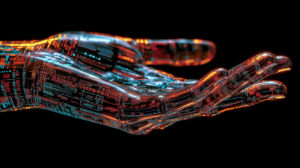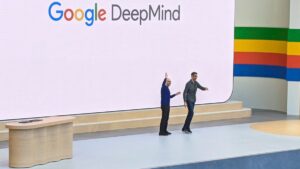DeepMind to Utilize AI Models for Enhancing Physical Robots

Google’s DeepMind: AI Models for Physical Robots
Google’s DeepMind, a pioneering force in artificial intelligence, has announced plans to incorporate its advanced AI models into the realm of physical robotics. This decision marks a significant step forward in the fusion of AI and robotics, aiming to create more intelligent and responsive machines that can operate in the real world.
Advancements in Robotics
The Role of AI in Robotics
AI plays a crucial role in enhancing the capabilities of robots. With machine learning algorithms, robots can learn from their environment, adapt to new situations, and make decisions on their own. Key areas where AI empowers robotics include:
- Perception: AI enables robots to interpret sensor data, allowing them to understand their surroundings better. This includes recognizing objects, terrain, and even human emotions.
- Decision-Making: Through sophisticated models, robots can process vast amounts of data to make informed decisions quickly.
- Autonomy: AI-driven robots can perform tasks without human intervention, which is essential for applications in hazardous environments or places where human presence is impractical.
Current Applications
Currently, AI-enabled robotics are being deployed in various sectors, including:
- Manufacturing: Robots handle complex assembly tasks more efficiently than their human counterparts.
- Healthcare: AI-driven robots assist in surgeries, diagnostics, and patient care, improving outcomes and reducing risks.
- Logistics: Autonomous vehicles and drones streamline delivery processes, making them faster and more reliable.
The Future of Robotics with AI
DeepMind’s Vision
DeepMind’s initiative to utilize its AI models for physical robots signals a commitment to developing systems that can interact with the physical world effectively. They aim to push the boundaries of what robots can achieve, particularly in challenging environments. This includes:
- Robust Task Performance: By improving the AI’s ability to reason and adapt, robots will manage more complex tasks that require not just mechanical skills but also cognitive capabilities.
- Collaboration with Humans: Future robots may be designed to work alongside humans in various settings, fostering safe and efficient collaborations in industries like healthcare, education, and construction.
Challenges Ahead
Technical Hurdles
Despite the excitement surrounding AI in robotics, several challenges remain. These include:
- Safety and Reliability: Ensuring that robots can perform tasks safely in dynamic environments without causing harm to humans or themselves.
- Data Privacy: As robots become increasingly integrated into daily life, data collection and its ethical implications come into question.
- Adaptability: Robots must be able to adapt to unexpected changes in their environment, which requires ongoing advancements in AI learning algorithms.
Potential Impact on Society
The integration of AI into physical robots by DeepMind could revolutionize several aspects of daily life. Here are potential benefits:
- Increased Efficiency: AI robots could perform tedious tasks, freeing up human workers for more complex roles.
- Enhanced Safety: In environments like warehouses or construction sites, robots could handle dangerous tasks, reducing the risk of injury to workers.
- Accessibility: Robots equipped with advanced AI could assist individuals with disabilities, enhancing their autonomy and quality of life.
Conclusion
Google’s DeepMind is set to change the landscape of robotics significantly by leveraging AI models. The potential for smarter, more adaptable robots is vast, promising improvements in numerous fields. While challenges remain, the advancements being made today could pave the way for a future where robots play an integral role in our everyday lives. As the technology progresses, it will be fascinating to observe how deeply integrated AI-driven robots can become in various sectors.






